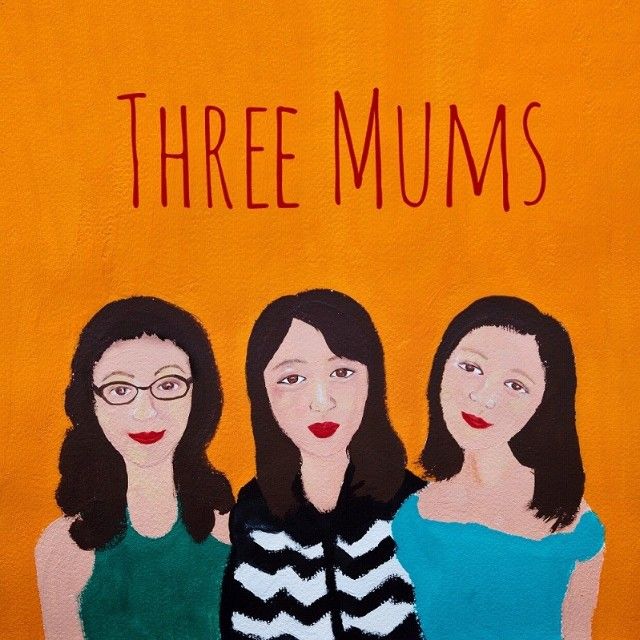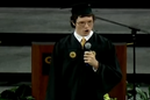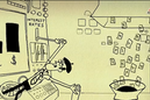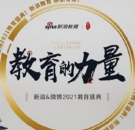你以为你上网的时候只是凭借你自己的爱好么?其实你已经被变相注射了一种激素,这个东西撑起了市值千亿的互联网帝国,但是也可能摧毁你的正常生活。

In an unprecedented attack of candour, Sean Parker, the 38-year-old founding president of Facebook, recently admitted that the social network was founded not to unite us, but to distract us. “The thought process was: ‘How do we consume as much of your time and conscious attention as possible?’” he said at an event in Philadelphia in November. To achieve this goal, Facebook’s architects exploited a “vulnerability in human psychology”, explained Parker, who resigned from the company in 2005. Whenever someone likes or comments on a post or photograph, he said, “we… give you a little dopamine hit”. Facebook is an empire of empires, then, built upon a molecule.
最近,Facebook前高管,38岁的肖恩.帕克(SeanParker)终于承认,社交网络的建立不是为了让我们更加亲密无间,而是为了分散我们的注意力。去年11月,他在费城的一次活动上表示,这一思路其实是:“我们如何尽可能多地占用你的时间和注意力?”2005年从Facebook辞职的帕克解释道,为了达到这一目的,Facebook的架构师利用了“人类心理的弱点”。每当你给一篇文章或照片点赞或留言时,帕克说,“这就是我们给你做的轻度多巴胺‘注射’”。Facebook这家“王中之王”的互联网巨头,就建立在这样一个小小分子之上。
Dopamine, discovered in 1957, is one of 20 or so major neurotransmitters, a fleet of chemicals that, like bicycle couriers weaving through traffic, carry urgent messages between neurons, nerves and other cells in the body. These neurotransmitters ensure our hearts keep beating, our lungs keep breathing and, in dopamine’s case, that we know to get a glass of water when we feel thirsty, or attempt to procreate so that our genes may survive our death.
多巴胺在1957年被发现,是20多种主要的神经递质之一。这群化学物质,就像骑着自行车的邮递员穿梭于车流中,在神经元、神经纤维和身体其他细胞之间传递紧急信息。这些神经递质确保我们的心脏继续跳动,肺保持呼吸。拿多巴胺来说,它能在我们感到口渴的时候提醒我们喝水,也能在需要把基因传递给后代的时候让我们产生繁殖的冲动。
In the 1950s, dopamine was thought to be largely associated with physical movement after a study showed that Parkinsonism (a group of neurological disorders whose symptoms include tremors, slow movement and stiffness) was caused by dopamine deficiency. In the 1980s, that assumption changed following a series of experiments on rats by Wolfram Schultz, now a professor of neuroscience at Cambridge University, which showed that, inside the midbrain, dopamine relates to the reward we receive for an action. Dopamine, it seemed, was to do with desire, ambition, addiction and sex drive.
20世纪50年代,一项研究表明帕金森综合症(一组神经病学症状包括震颤、运动缓慢和僵硬)是由多巴胺缺乏引起的,从此人们认为多巴胺主要与身体运动功能有关。到了20世纪80年代,这一假设受到了挑战,当时,剑桥大学的神经科学教授沃尔夫勒姆.舒尔茨(WolframSchultz)对大鼠进行了一系列实验,结果表明,在中脑内,多巴胺与奖赏行为有关。这种分子与欲望、野心、毒瘾和性冲动的信号通路似乎都有关系。
Schultz and his fellow researchers placed pieces of apple behind a screen and immediately saw a major dopamine response when the rat bit into the food. This dopamine process, which is common in all insects and mammals, is, Schultz tells me, at the basis of learning: it anticipates a reward to an action and, if the reward is met, enables the behaviour to become a habit, or, if there’s a discrepancy, to be adapted. (That dishwasher tablet might look like a delicious sweet, but the first fizzing bite will also be the last.) Whether dopamine produces a pleasurable sensation is unclear, says Schultz. But this has not dented its reputation as the miracle bestower of happiness.
舒尔茨和他的同事们先将苹果片——对于大鼠来说这是不折不扣的美食——藏在了隐蔽的位置,当大鼠找到并咬下这些食物时,他们立刻观察到了动物脑内的多巴胺反应。这种多巴胺的释放在所有昆虫和哺乳动物中都是常见的。舒尔茨告诉我,作为学习的基础,多巴胺参与了对一个行为的奖励,如果得到了奖励,就能使行为成为一种习惯;如果没有得到奖励,行为就会做出相应调整。比如你把洗碗海绵看成美味的蛋糕,上去咬了一口,发现这不是蛋糕,下次就不会再咬上去了。舒尔茨说,多巴胺能否直接产生愉悦的感觉目前还不清楚。但这并没有妨碍它成为带来幸福感的“神药”。
Dopamine inspires us to take actions to meet our needs and desires – anything from turning up the heating to satisfying a craving to spin a roulette wheel – by anticipating how we will feel after they’re met. Pinterest, the online scrapbook where users upload inspirational pictures, contains endless galleries of dopamine tattoos (the chemical symbol contains two outstretched arms of hydroxide, and a three-segmented tail), while Amazon’s virtual shelves sag under the weight of diet books intended to increase dopamine levels and improve mental health.
从打开暖气按钮这样的小事,到满足轮盘赌的欲望,多巴胺激励我们采取行动来满足我们的需求和欲望。在线图片剪贴簿Pinterest是一款可以让用户上传加工图片和照片的社交软件,其中包含大量展示多巴胺化学式纹身的照片(该化学符号包含两臂的氢氧根和三段分割的尾巴)。亚马逊的虚拟书架则挤满了减肥食谱,就为了增加多巴胺水平,改善心理健康。
“We found a signal in the brain that explains our most profound behaviours, in which every one of us is engaged constantly,” says Shultz. “I can see why the public has become interested.”
舒尔茨说:“我们在大脑中发现了一个信号,可以解释我们意义最为深远的行为,我们每个人都沉浸其中,停不下来——我可以理解为什么公众会对此感兴趣了。”
In this way, unlike its obscure co-workers norepinephrine and asparagine, dopamine has become a celebrity molecule. The British clinical psychologist Vaughan Bell once described dopamine as “the Kim Kardashian of molecules”. In the tabloid press, dopamine has become the transmitter for hyperbole. “Are cupcakes as addictive as cocaine?” ran one headline in the Sun, citing a study that showed dopamine was released in the orbital frontal cortex – “the same section activated when cocaine addicts are shown a bag of the class A drug” – when participants were shown pictures of their favourite foods. Still, nowhere is dopamine more routinely name-dropped than in Silicon Valley, where it is hailed as the secret sauce that makes an app, game or social platform “sticky” – the investor term for “potentially profitable”.
与默默无闻的“同事”去甲肾上腺素和天冬酰胺不同,多巴胺从此成为了“名流分子”。英国临床心理学家沃恩.贝尔(VaughanBell)曾将多巴胺描述为“分子中的金.卡戴珊”。《太阳报》(theSun)刊登了一篇题为“纸杯蛋糕会像可卡因一样让人上瘾吗?”的文章,其中引用了一项研究,该研究显示,向被试展示他们最喜欢的食物图片时,大脑的前额叶皮层释放了多巴胺——“当向可卡因成瘾者展示一袋毒品时,同样的区域也会被激活”。尽管如此,在硅谷,多巴胺比在其他任何地方都更常见,它被誉为“神秘酱汁”,让应用程序、游戏或社交平台“更有粘性”,这被投资者称为“潜在利润”。
“Even a year or two before the scene about persuasive tech grew up, dopamine was a molecule that had a certain edge and sexiness to it in the cultural zeitgeist,” explains Ramsay Brown, the 28-year-old cofounder of Dopamine Labs, a controversial California startup that promises to significantly increase the rate at which people use any running, diet or game app. “It is the sex, drugs and rock’n’roll molecule. While there are many important and fascinating questions that sit at the base of this molecule, when you say ‘dopamine’, people’s ears prick up in a way they don’t when you say ‘encephalin’ or ‘glutamate’. It’s the known fun transmitter.”
“在诱导技术成熟以前,多巴胺就是一种极具优势并带有性文化思潮的分子,”拉姆齐.布朗(RamsayBrown)解释道。这位28岁的年轻人创办了“多巴胺实验室”(DopamineLabs),这是一家饱受争议的加州企业,致力于大幅增加人们使用的跑步、饮食或游戏的软件的频率。“这个分子代表了性、毒品和摇滚乐。当你提到多巴胺时,人们的耳朵就会竖起来,因为在这个分子的背后有许多重要而迷人的问题,但当你说脑啡肽或谷氨酸时就不会。多巴胺是个广为人知的乐趣传递者。”
Fun, perhaps, but as with Kardashian, dopamine’s press is not entirely favourable. In a 2017 article titled “How evil is tech?”, the New York Times columnist David Brooks wrote: “Tech companies understand what causes dopamine surges in the brain and they lace their products with ‘hijacking techniques’ that lure us in and create ‘compulsion loops’.” Most social media sites create irregularly timed rewards, Brooks wrote, a technique long employed by the makers of slot machines, based on the work of the American psychologist BF Skinner, who found that the strongest way to reinforce a learned behaviour in rats is to reward it on a random schedule. “When a gambler feels favoured by luck, dopamine is released,” says Natasha Schüll, a professor at New York University and author of Addiction By Design: Machine Gambling in Las Vegas. This is the secret to Facebook’s era-defining success: we compulsively check the site because we never know when the delicious ting of social affirmation may sound.
除了乐趣,多巴胺也引来了不少批评的声音。在2017年《纽约时报》的专栏作家大卫.布鲁克斯(DavidBrooks)写的一篇名为《科技有多邪恶?》的文章中说道:“科技公司明白是什么原因导致大脑中的多巴胺激增,他们在自己的产品上使用‘劫持技术’,诱骗我们入局并创造‘强制循环’。”布鲁克斯写道,大多数社交网络平台都会创建一些不规则发放的奖励,这是老虎机制造商惯用的伎俩。这项技术的应用是基于美国心理学家BF.斯金纳(BFSkinner)的研究成果,他发现强化大鼠的习得行为的最佳方式是随机安排奖励。纽约大学(NewYorkUniversity)教授、《被设计的成瘾:在拉斯维加斯赌博》(AddictionbyDesign:MachineGamblinginLasVegas)一书的作者娜塔莎.舒尔(NatashaSchull)说:“当一个赌徒觉得运气来了时,多巴胺就会释放出来。”这就是Facebook成功的秘诀:我们像得了强迫症一样频繁刷新这个网站,就是因为我们永远不知道什么时候会收到来自他人的美妙赞同。


- 145.15分
- 139.85分
- 132.06分
- 109.23分
- 99.75分
- 93.06分
- 89.66分
- 87.25分
- 84.74分
- 83.32分











 三点半之后放学究竟去哪里?
三点半之后放学究竟去哪里? 一亿90后在半夜两点糟蹋自己
一亿90后在半夜两点糟蹋自己 如何优雅的掏空孩子爸妈们的钱包?
如何优雅的掏空孩子爸妈们的钱包? 该不该卖掉舒适的三居室去换好学区的老破小?
该不该卖掉舒适的三居室去换好学区的老破小? 湖南师范大学校花气质佳
湖南师范大学校花气质佳








 选择国际学校如何帮孩子抢占先机
选择国际学校如何帮孩子抢占先机 新浪2017“中国教育盛典”
新浪2017“中国教育盛典” 2017全国特别报道:40年,新高考
2017全国特别报道:40年,新高考 第六届诚信移民机构评选获奖名单
第六届诚信移民机构评选获奖名单



 “明星爸爸”刘畊宏谈育儿经
“明星爸爸”刘畊宏谈育儿经 台湾大学爆笑爱情课
台湾大学爆笑爱情课 诺贝尔经济奖得主开讲金融市场
诺贝尔经济奖得主开讲金融市场 你不知道的日本传统文化
你不知道的日本传统文化


 2018国家公务员考试报考指南
2018国家公务员考试报考指南 2018年考研报名
2018年考研报名 直击2017年6月大学英语四六级
直击2017年6月大学英语四六级 2017全国高考特别报道
2017全国高考特别报道